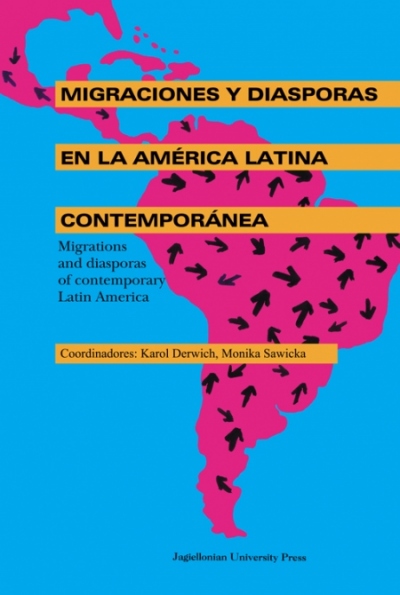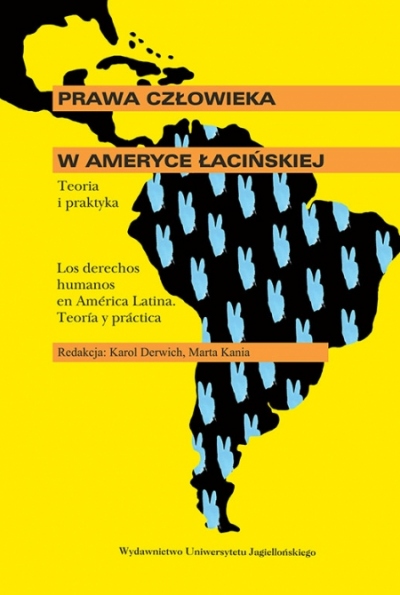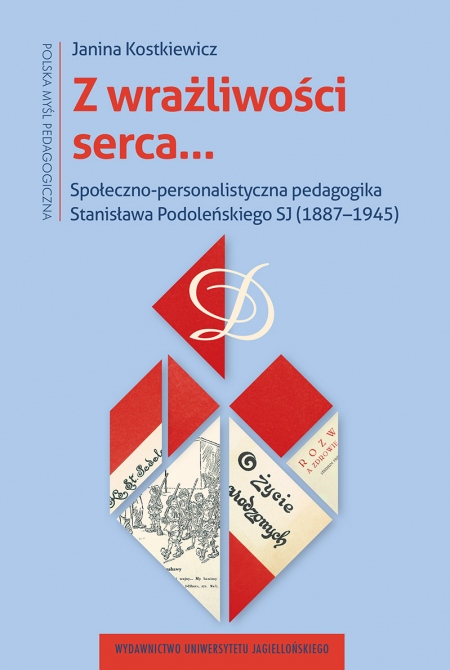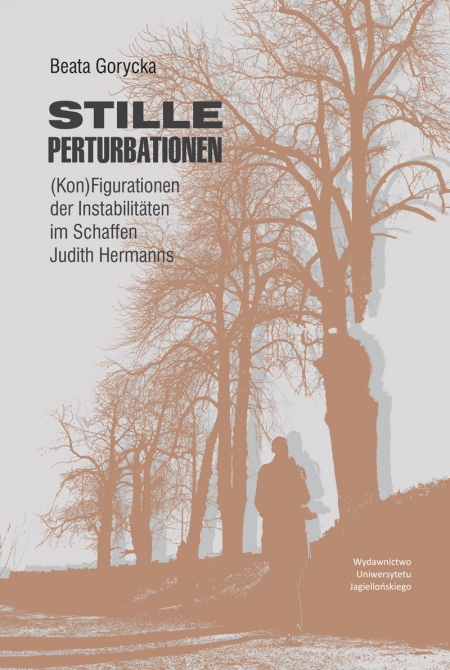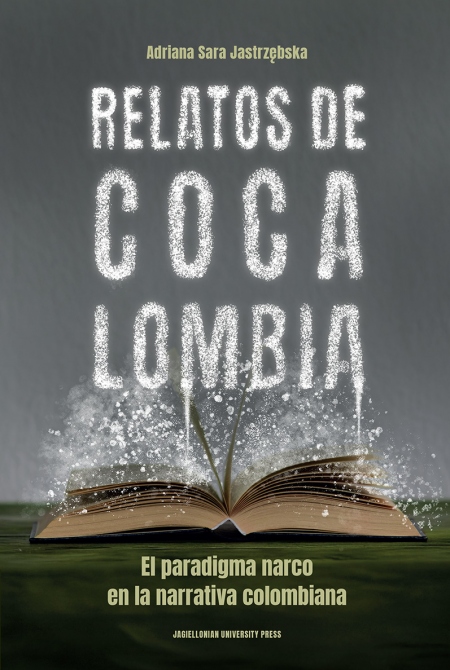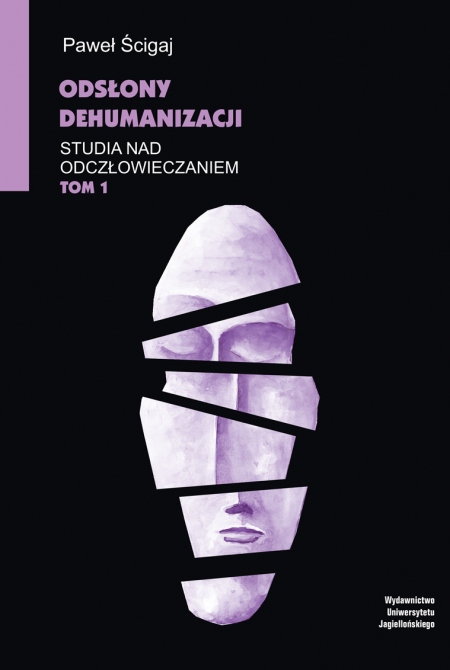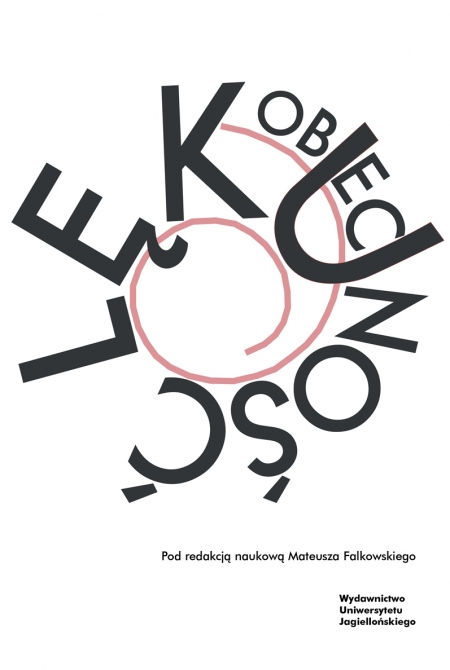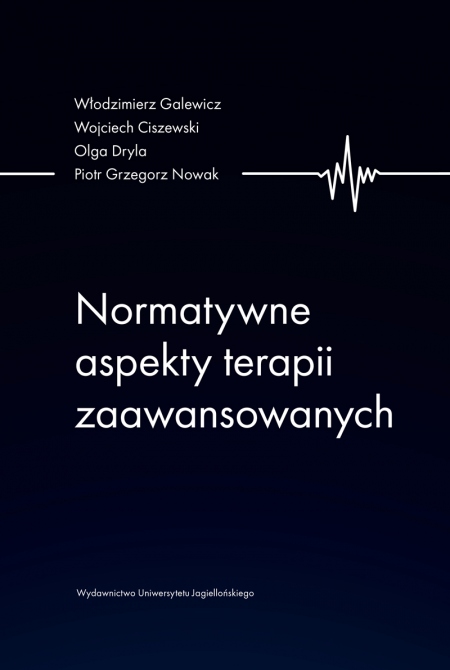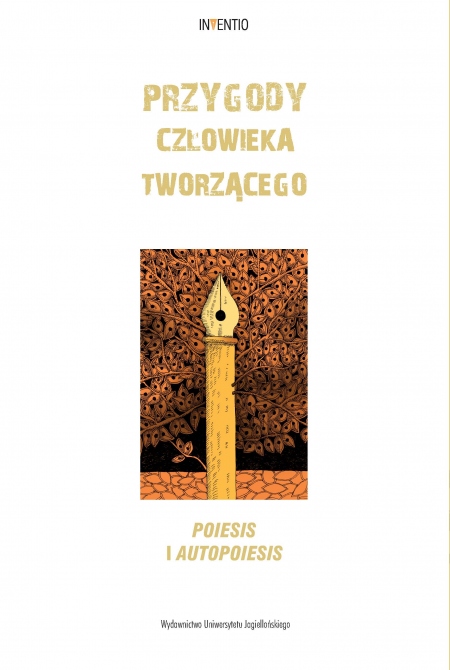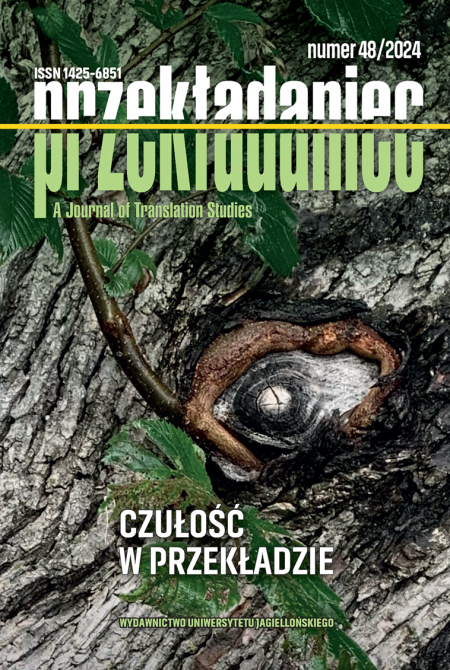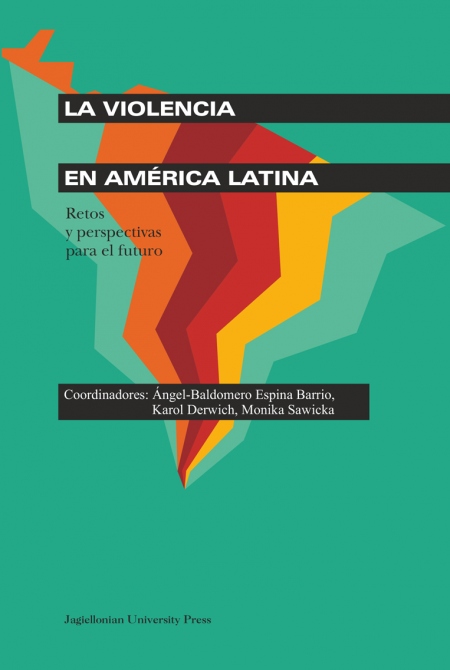
La violencia en América Latina
Retos y perspectivas para el futuro
Edited by: Ángel-Baldomero Espina Barrio, Karol Derwich, Monika Sawicka
Pages: 270
Book format: 17x24 cm
Publication date: 2021
Publication date: 24.03.2021
Book description
Although defined as an area of peace due to the low likelihood of inter-state conflict, Latin America is the most dangerous region in the world. Such statement is supported by figures published by the United Nations Office on Drugs and Crime (UNODC) indicating the homicide rate per 100,000 inhabitants. Data for 2017 show that the homicide rate in South America (24.2) was higher than in Africa (13.0), Europe (3.0), and Asia (2.3). Although ensuring personal safety is one of the fundamental obligations of the state, this standard is not translated into practice. The reality of Latin America, where violence takes very diverse forms, is very complex. This reality is the subject of this book.
The authors of the chapters in this volume investigate the notion of violence and safety with the aim of bringing the reader closer to the sources of violence, its – at times imperceptible – types and consequences. By looking at the analyzed phenomena through the prism of anthropological, cultural, political and literary studies, experts take into account the particularities of various countries, such as Mexico, Colombia, Argentina, Peru and El Salvador. Representing diverse research areas and academic centers in Europe, the United States and Latin American countries, the authors resisted the temptation of seeking universal and simplified solutions. Instead, they provided an insightful and thought-provoking overview of a phenomenon affecting millions of citizens in the region. The publication is therefore a voice in the discussion on possibly the most serious challenge facing Latin America in the 21st century.
____________________________________
Aunque se defina como una zona de paz, en la que la probabilidad de que se produzcan conflictos interestatales es extremadamente baja, América Latina es la región más peligrosa del mundo. Se puede hacer esta afirmación por los datos de la Oficina de las Naciones Unidas contra la Droga y el Delito (ONUDD) sobre la tasa de homicidios por cada 100.000 habitantes. El informe correspondiente a 2017 muestra que esta tasa fue mayor en América del Sur (24,2) que en África (13,0), Europa (3,0) o Asia (2,3). Aunque garantizar la seguridad personal es uno de los deberes fundamentales del Estado, no se traduce en la práctica. La realidad en América Latina, donde la violencia toma formas muy diferentes, es muy compleja. Esta realidad es el tema de este volumen.
Los autores de los siguientes capítulos del libro examinan la cuestión de la violencia y seguridad a fin de acercar al lector a las fuentes de la violencia, sus tipos y consecuencias a veces no evidentes. Al observar los fenómenos analizados a través de los estudios antropológicos, culturales, políticos y literarios, los especialistas tienen en cuenta la especificidad de cada uno de los países, entre ellos: México, Colombia, Argentina, Perú y El Salvador. Al representar a sus diversos campos y centros académicos de Europa, los Estados Unidos y los países de América Latina, los investigadores no se vieron tentados a buscar soluciones universales y simplificadas, sino trataron de dar una imagen exacta del fenómeno que afecta a millones de ciudadanos de la región. La publicación es una voz en la discusión sobre el quizás más serio desafío que enfrenta América Latina en el siglo XXI.
The authors of the chapters in this volume investigate the notion of violence and safety with the aim of bringing the reader closer to the sources of violence, its – at times imperceptible – types and consequences. By looking at the analyzed phenomena through the prism of anthropological, cultural, political and literary studies, experts take into account the particularities of various countries, such as Mexico, Colombia, Argentina, Peru and El Salvador. Representing diverse research areas and academic centers in Europe, the United States and Latin American countries, the authors resisted the temptation of seeking universal and simplified solutions. Instead, they provided an insightful and thought-provoking overview of a phenomenon affecting millions of citizens in the region. The publication is therefore a voice in the discussion on possibly the most serious challenge facing Latin America in the 21st century.
____________________________________
Aunque se defina como una zona de paz, en la que la probabilidad de que se produzcan conflictos interestatales es extremadamente baja, América Latina es la región más peligrosa del mundo. Se puede hacer esta afirmación por los datos de la Oficina de las Naciones Unidas contra la Droga y el Delito (ONUDD) sobre la tasa de homicidios por cada 100.000 habitantes. El informe correspondiente a 2017 muestra que esta tasa fue mayor en América del Sur (24,2) que en África (13,0), Europa (3,0) o Asia (2,3). Aunque garantizar la seguridad personal es uno de los deberes fundamentales del Estado, no se traduce en la práctica. La realidad en América Latina, donde la violencia toma formas muy diferentes, es muy compleja. Esta realidad es el tema de este volumen.
Los autores de los siguientes capítulos del libro examinan la cuestión de la violencia y seguridad a fin de acercar al lector a las fuentes de la violencia, sus tipos y consecuencias a veces no evidentes. Al observar los fenómenos analizados a través de los estudios antropológicos, culturales, políticos y literarios, los especialistas tienen en cuenta la especificidad de cada uno de los países, entre ellos: México, Colombia, Argentina, Perú y El Salvador. Al representar a sus diversos campos y centros académicos de Europa, los Estados Unidos y los países de América Latina, los investigadores no se vieron tentados a buscar soluciones universales y simplificadas, sino trataron de dar una imagen exacta del fenómeno que afecta a millones de ciudadanos de la región. La publicación es una voz en la discusión sobre el quizás más serio desafío que enfrenta América Latina en el siglo XXI.
Language
Spain
Edition
First
Edited by
Ángel-Baldomero Espina Barrio
, Karol Derwich
, Monika Sawicka

ISBN: 978-83-233-4954-9
Country of producer: Poland
RECOMMENDED BOOKS
NEW BOOKS

La violencia en América Latina
Retos y perspectivas para el futuro
La violencia en América Latina
Retos y perspectivas para el futuro
Choose chapters to buy:
Order value:
0.00 zł
